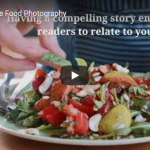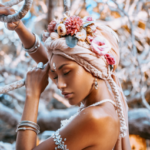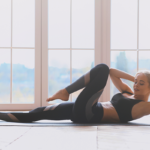Ultimate Guide to Still Life Photography
When we think of fine art photography, we see still life photos in our mind. Still, life photos come in different forms, from the tedious art school bowl of fruit to the enticing and creative digital creations you see on the internet today. Still, life photographs could fall into any genre or niche of photography, and it’s an essential skill that all photographers should try to learn.
Here’s a complete guide to getting started on still life photography.
What is Still Life?
Still, life photos are a substantial part of photography for a lot of reasons. It is a kind of fine art photography, more similar to an oil painting than to what a lot of people think of as shooting a photo. The subjects of the photos are inanimate everyday objects. The composition is essential here, and you can take the time you need perfect your shot. You could arrange the objects in any way you prefer, and you have absolute control over every element of the composition.
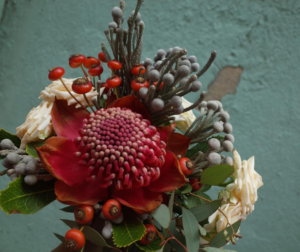
Here are 15 tips on how you can master still life photography:
1 Learn to Love It
For some photographers, still, life images bring up ideas of school art class homework. True, still life composition is usually a homework given by photography teachers and instructors. However, there is a great reason for that. No other photography niche or form is as accessible to everybody, and no other kind of art compels the photographer to accept full responsibility for each and every aspect of still life photography. Mastering still life composition does indeed make you a much better photographer.
Spend a few moments searching the internet for some of the spectacular still life photography images coming from photographers all over the globe. It does not take too long to see inspiration, and once you begin, your creative juices start flowing as well.
2 Paint the Image
It sometimes helps to think of still life photos like a painting instead of a photograph. A lot of people, although hopefully not too many photographers, see a photograph as something that’s shot in a fraction of a second. However, everybody knows that paintings take quite a long while to create. Everybody appreciates that painters can control exactly what they put on their white canvas. Keep in mind that is also defines what still life photography is.
3 Take Your Sweet Time
Snapping the image could take a second, but take your sweet time! Consider the artistic aspects of the image. Take time to determine the lighting you’d prefer, to check out what other artists have created, to reassemble the objects, to put or omit props, and to tinker with the other elements in your still life composition.
4 Low-Key versus High-Key Lighting
Don’t limit yourself into one look. Like all artists, photographers can get into ruts. An ideal way to mix and spice things up is to capture the same scene as both a low-key and a high-key photo.
High-key images are evenly lit and even bright. Shadows, however, are softer, and the light is usually diffused beautifully. High-key images are likely to focus on details and colors.

On the other hand, low-key images are very much contrasted. Opt for low-key lighting for one-of-a-kind looks. With only one light source matched with fast shutter speed, you could make objects appear to float on black backgrounds. Low ISO, high f-stop, and quick shutter speed could all be used to achieve the same effect. It’s also an ideal way to emphasize forms, textures, and shapes.
5 Control the Amount of Your Lighting
One of the wonderful things about shooting still life photography is the ability to set the scene things to your liking. You can move the fruits around in the bowl, or you can also spend all day perfecting the light. It’s up to you, really.
Try using the light to guide the audience’s eyes through the photo. Light sources that come from the left are likely to make the viewer’s vision walk through the picture as though they are reading a book. Nevertheless, if the shadows are harsh, you can diffuse the one you already have or add another light source.
6 Control the Temperature and Color of Your Lighting
Light has many features that you can control. Moreover, the distinctive opportunity offered by shooting still life photography gives us a perfect chance to practice. Use reflectors for added color and more light.
7 Keep it Steady
Look around for the best tripod that offers the most features. A lot of people use their tripods for different forms of photography, so it really pays to consider how you can use your tripod beyond still life photography. Portability is one of the essential criteria, but it’s likewise a difficult one to become proficient at.
8 Use a Remote Shutter Release
A remote shutter release is one of the things that can significantly improve your mobility around the shoot. If you search online, you can find a ton of affordable and budget-wise options for most DSLR models. In general, a remote shutter release device works great, but sometimes the quicker to set up option is much better. The technology could be quite finicky, so if you are having issues with your remote app, an old-school option can fix the problem just as well.
9 Shiny Objects
Shiny items can make fantastic props and even subjects, but they can make your life a tad bit harder. Reflective things—well, reflect everything nearby, even the items you don’t want. Your lights, camera, and even yourself tend to make unexpected and unwanted cameos in your final photos. Try to move your objects around to prevent future issues.
10 Simple vs Complex
As you arrange your still life scene, you are faced with a plethora of choices. What camera settings are best? What kind of background to use? What props should you put in the scene? Here the KISS (Keep It Simple, Silly) principle applies. While you can make an intricate composition, try to keep it simple if you are in doubt.

11 Focus and Depth of Field
Consider the focal length. Play around with depth of field, and use a zoom lens or a prime lens to mix things up. Emphasizing on one small point instead of having the whole frame in focus could change your still life composition dramatically. A lot of cameras are built to focus on the human face, however, so you can try using manual focus instead.
12 Camera Angle
Try moving your DSLR and see how the still life composition changes. Shoot both with a tripod and with the camera in your hand. You could just find a much better angle than the one you had imagined. When shooting handheld, however, ensure that your shutter speed is fast enough to prevent camera shake.
13 Add Movement
Although, traditionally a still life is “still” you could add elements of motion to your still life photography. Reach your hand into the frame and arrange something mid-photo. Or you can also slow down your shutter speed and capture motion blur with a twirling ballerina in a music box. It’s your call.
14 Black and White Still Life Photography
When you remove colors from still life photography, other aspects tend to fill in the gaps that color left. Textures, tones, contrasts, and shapes become more prominent.
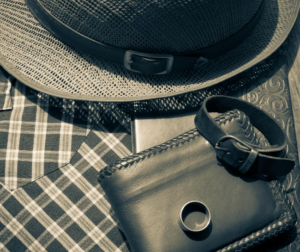
Keep in mind that it’s always better to decide on black and white still life photography from the start. It’ll guide all of the creative choices you make from the start to the end of your photoshoot.
15 Post-Production
If there aren’t any rules for still life photography, post-production isn’t the place to impose them. Your editing is up to you. Most photography purists try to do as little editing as possible, while others digitally modify the entire photo.
Conclusion
The internet is overflowing with still life photography styles and ideas. You can find inspiration from there while you master this photography niche. Keep in mind that your online photography portfolio will always be the heart of your marketing techniques to expand your photography business. It is an ideal way to establish your presence and expand your audience reach in the market. With potential clients constantly looking for photographers who offer specific services, having a strong presence online can bring you to the front and help more clients discover you.
Remember your still life photography needs protecting online with watermarks. Start unlimited watermarking today.


